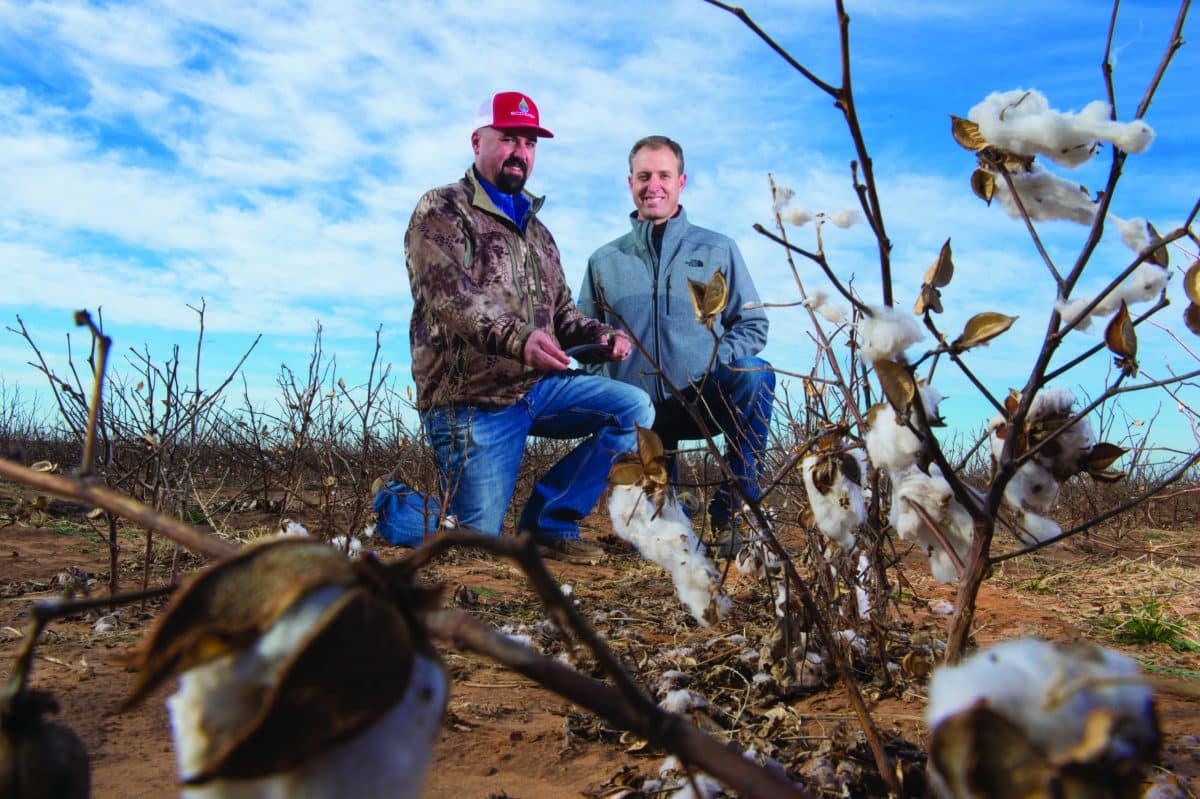Jeremy Brown is a fourth-generation farmer near Lamesa, Tex. He and his wife, Sarah, established Broadview Agriculture, Inc. in 2007. They farm 4,000 acres, with the majority being cotton. Of these acres, 1,100 are certified organic and 2,900 are conventional. They also grow corn, wheat, sorghum, peanuts, rye, and sesame. When rotating cotton, they plant wheat, rye or a cover crop, as well as partner with stocker operators who graze calves on those acres.
Brown uses pre-season grid soil sampling to determine available nutrients. Results serve as the basis for fertilizer recommendations through the growing season. They use fertigation on conventional, irrigated acres to apply nutrients as efficiently as possible.
“When we apply nutrients, we want to be as precise as we can,” Brown says. “A good retailer who you trust will give you the best information to make timely decisions.”
About 60 percent of Broadview ground is dryland and 40 percent is irrigated. As Brown replaces center pivots, he installs subsurface drip irrigation systems. He works with Taylor Allison, SDI sales consultant with Eco-Drip Irrigation in Lubbock, Tex., as he makes this transition. Eco-Drip Irrigation is a full-service subsurface drip irrigation company that specializes in design, installation and support of drip irrigation systems. SDI allows Brown and other growers to inject water and nutrients through the drip system directly to the root zone of the crop.
Allison noted Brown’s willingness to adapt to drip irrigation.
“Somebody has to start it,” Allison says, “and in the future, folks here will see the benefits Jeremy’s reaping. He’s replenishing his soil and getting it in the shape it’s supposed to be. Instead of introducing steel, we’re introducing good practices.
Brown’s leadership is evident in his community and in the agriculture industry. He serves as president of the Dawson County Farm Bureau, is a board member for Plains Cotton Growers and regularly speaks at agricultural events. He was also one of five growers selected for the 2017 Faces of Farming and Ranching, a U.S. Farmers and Rancher’s Alliance campaign.
Best Practice Management
- Annual grid and soil sampling guide nutrient management plan to focus only on what nutrients are needed
- Nutrient management plan determines how much N, P, and K are needed
- Pre-sidedress and fall nitrate tests help determine in-season nitrogen applications
- Injected UAN reduces volatilization
- Variable-rate nutrient application ensures crops get the right amount of nutrients
- GPS-precision nutrient applications helps soils that need additional nutrients get the right ones
- Variable-rate prayer delivers the exact amount of product needed
- Cover crops retain nutrients
- Conservation practices include cover crops, no-till, grassed waterways, riparian buffers, wildlife habitat, an agricultural chemical handling facility, and a manure storage building
